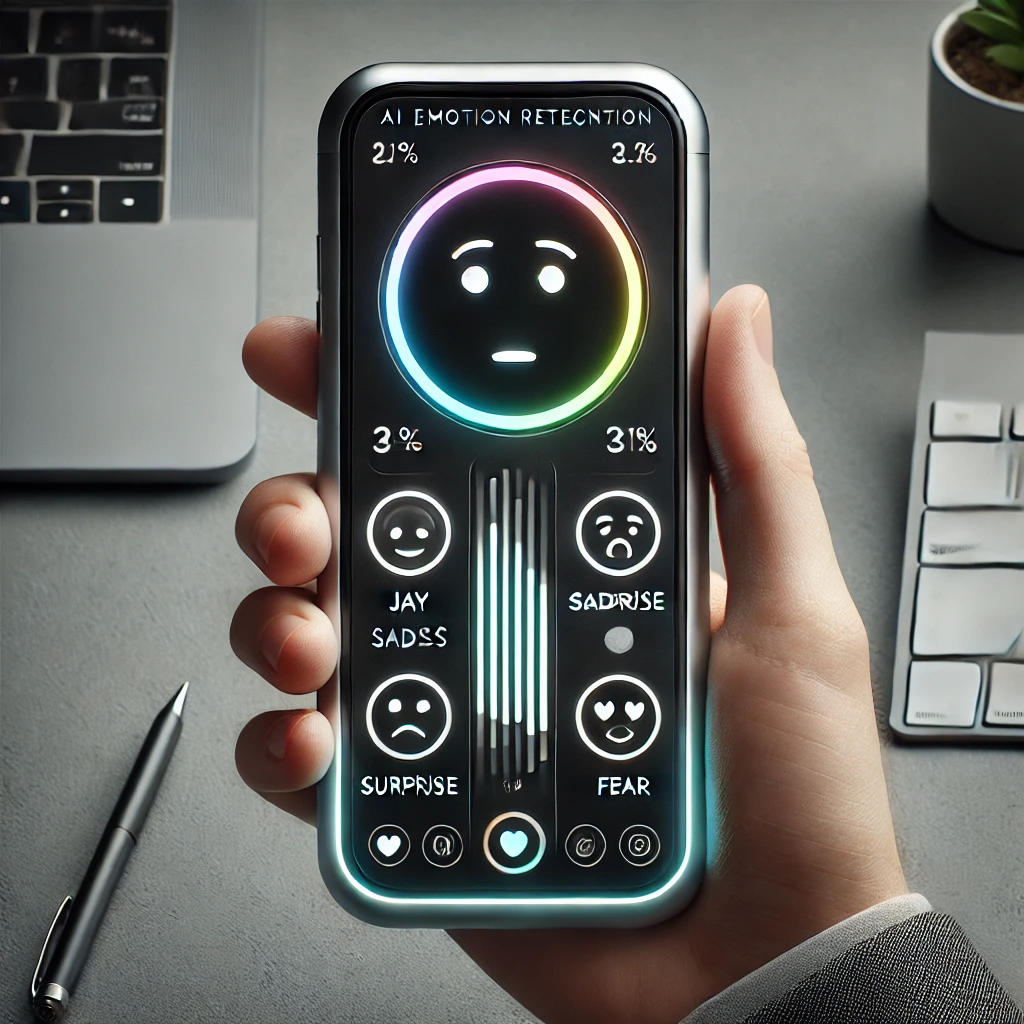
Emotion detection powered by Artificial Intelligence (AI) is revolutionizing industries by enabling systems to understand human feelings through data such as text, voice, or facial expressions. These technologies are used in a wide range of applications, including customer service, healthcare, entertainment, and even security. In this detailed guide, we will walk you through the process of getting started with AI-powered emotion detection, from understanding the core concepts to building your own system.
What is AI-Powered Emotion Detection?
AI-powered emotion detection refers to the use of algorithms and machine learning models to identify human emotions based on different types of data. This could be anything from text data (like customer feedback), speech data (such as tone of voice), or visual data (like facial expressions). The primary goal is to classify emotions such as happiness, sadness, anger, fear, surprise, and disgust, or even complex emotional states such as confusion or frustration.
AI models are trained on large datasets, which helps them identify subtle patterns in human behavior that are often difficult for people to detect. These systems are already playing a significant role in industries such as marketing, where understanding customer emotions can enhance service delivery, and in mental health, where analyzing emotions can assist in therapy and diagnosis.
Emotion detection can be applied in multiple contexts, including:
- Customer Service: AI systems can recognize a customer’s emotional state through their voice or written text and adjust responses accordingly.
- Healthcare: Emotion detection helps mental health professionals monitor patients’ emotional well-being and can aid in diagnosis and treatment.
- Entertainment: AI models can adjust the content or narrative based on the emotional feedback received from the audience.
2. How Emotion Detection Works: An Overview
Emotion detection systems use various techniques to understand human emotions. The fundamental technology behind these systems is machine learning, which relies on large datasets to teach the system how to recognize emotional cues.
There are three main types of emotion detection:
- Text-Based Emotion Detection: Analyzes written words to detect emotions based on language patterns, sentiment, and contextual clues.
- Speech-Based Emotion Detection: Detects emotions through vocal elements such as tone, pitch, speed, and intonation.
- Facial Expression Recognition: Identifies emotions through facial movements and expressions using computer vision.
For a successful emotion detection system, the data used for training must be rich, diverse, and representative of various emotional expressions. Once trained, these models can classify emotions based on incoming data and can even make predictions about emotions in real-time.
3. Text-Based Emotion Detection
Text-based emotion detection focuses on extracting emotions from written content. Whether it’s customer feedback, product reviews, or social media posts, the first step in building a text-based emotion detection model involves analyzing how emotions are expressed in language.
Step-by-Step Process:
-
Data Collection:
- The first step is to gather a large dataset of labeled text. This data should contain examples of various emotions such as joy, sadness, anger, etc. Public datasets like Emotion-Stimulus Dataset or GoEmotions can serve as valuable resources.
-
Preprocessing:
- Clean the data to remove irrelevant information such as punctuation, stop words, and special characters.
- Tokenize the text into individual words and normalize them (e.g., converting to lowercase).
- Perform stemming or lemmatization to reduce words to their root form, which helps standardize the dataset.
-
Feature Extraction:
- Use techniques like TF-IDF (Term Frequency-Inverse Document Frequency) or Word2Vec to convert text into numerical vectors that can be processed by machine learning algorithms.
- Sentiment analysis tools, like VADER or TextBlob, can also be used to evaluate the sentiment of the text (positive, negative, or neutral), which can be an important feature for emotion detection.
-
Model Selection:
- For text classification, algorithms like Support Vector Machines (SVM), Naive Bayes, or Deep Learning models like LSTM (Long Short-Term Memory) can be used.
- Pretrained models like BERT (Bidirectional Encoder Representations from Transformers) are also effective for text-based emotion classification.
-
Model Training:
- Train your selected model on the preprocessed data, ensuring it can learn the patterns and relationships that indicate various emotions. Use techniques like cross-validation to prevent overfitting.
-
Evaluation:
- Measure the performance of your model using metrics like accuracy, precision, recall, and F1 score. Confusion matrices can help in understanding the types of errors your model is making.
4. Speech-Based Emotion Detection
Speech-based emotion detection involves analyzing vocal elements such as pitch, speed, and volume to classify emotions. This process requires the use of audio data, typically in the form of voice recordings, and specialized techniques to extract acoustic features.
Step-by-Step Process:
-
Audio Data Collection:
- Collect audio samples with labeled emotions from datasets such as RAVDESS (Ryerson Audio-Visual Database of Emotional Speech and Song) or EmoReact.
-
Preprocessing:
- Convert audio recordings into a usable format, such as waveform or spectrograms.
- Normalize the audio to ensure consistent volume levels and remove background noise.
-
Feature Extraction:
- Extract features like Mel-frequency cepstral coefficients (MFCCs), which describe the speech spectrum.
- Additional features such as pitch, tempo, energy, and voice intensity can help identify emotional cues.
-
Model Selection:
- Common models used for speech-based emotion detection include Support Vector Machines (SVM), Random Forests, or Recurrent Neural Networks (RNNs).
- Deep Learning models like Convolutional Neural Networks (CNNs) or LSTM networks are highly effective in speech emotion detection.
-
Training:
- Train the selected model using the extracted features and labeled emotion data. Use techniques like data augmentation to enhance the dataset if needed.
-
Evaluation:
- Evaluate the model using metrics like accuracy and confusion matrices. Ensure that the model can handle different accents, speaking speeds, and noisy environments.
5. Facial Expression Recognition
Facial expression recognition uses computer vision to identify emotions based on facial movements, such as the shape of the mouth, eye movements, and eyebrow position. Different emotions are associated with specific facial movements, and AI models can learn to detect these patterns.
Step-by-Step Process:
-
Data Collection:
- Gather a labeled dataset of facial expressions, such as FER-2013 or AffectNet. These datasets contain images of faces labeled with emotions like happiness, sadness, anger, and surprise.
-
Preprocessing:
- Detect faces in the images using tools like OpenCV or Haar Cascades.
- Normalize and resize the images so that all faces are aligned and of a consistent size.
-
Feature Extraction:
- Extract features such as facial landmarks, which represent key points on the face, such as the eyes, mouth, and nose.
- Use techniques like Histogram of Oriented Gradients (HOG) or Gabor filters to extract texture and shape information from the facial images.
-
Model Selection:
- Use Convolutional Neural Networks (CNNs), which are particularly effective at identifying patterns in image data.
- Alternatively, pre-trained models like VGG-Face or EmotionNet can be fine-tuned on your dataset to improve accuracy.
-
Training:
- Train the model using the extracted features, ensuring it learns to recognize the relationship between facial movements and emotions.
-
Evaluation:
- Measure the model’s performance using metrics like accuracy and F1 score. Make sure the model can correctly classify emotions under different lighting conditions and facial orientations.
6. Building Your Own Emotion Detection System
After understanding the various emotion detection methods, it’s time to build your own system. Here’s a simplified workflow:
-
Define the Problem:
- Choose which type of emotion detection you want to build (text, speech, or facial recognition).
-
Data Collection:
- Gather relevant data from online resources or by using public datasets.
-
Preprocessing:
- Clean and preprocess the data by removing irrelevant information or normalizing the data.
-
Model Selection:
- Select the appropriate machine learning model based on the type of data you are using (e.g., SVM for text or CNN for facial expression recognition).
-
Training:
- Train the model on the prepared dataset using machine learning frameworks like TensorFlow or PyTorch.
-
Evaluation:
- Evaluate the model’s performance using appropriate metrics and improve the model if needed.
-
Deployment:
- Deploy the model in a production environment for real-time emotion detection using tools like Flask or FastAPI.
7. Ethical Considerations and Challenges
While AI-based emotion detection provides numerous benefits, it also raises significant ethical concerns:
-
Privacy: Using voice, text, or facial data to detect emotions requires careful handling of personal data to ensure compliance with privacy laws, such as GDPR.
-
Bias: Emotion detection systems may inherit biases if the training data lacks diversity. For example, facial recognition models may perform poorly on non-Caucasian faces if the training data is predominantly Caucasian.
-
Misuse: Emotion detection systems can be misused for manipulative purposes, such as targeting vulnerable individuals in marketing. Developers should establish clear ethical guidelines for the use of such systems.
Transparency, accountability, and fairness must guide the development and deployment of emotion detection technologies.
AI-powered emotion detection is a powerful tool that can provide valuable insights into human behavior. By understanding the underlying technologies and following the step-by-step process outlined in this guide, you can build your own emotion detection system. Whether it’s analyzing text, voice, or facial expressions, the potential applications for emotion detection are vast, offering exciting opportunities in industries ranging from healthcare to entertainment. However, it’s essential to approach this technology with caution, ensuring ethical use and addressing challenges related to privacy and bias.



